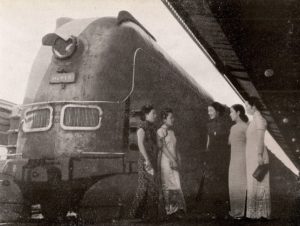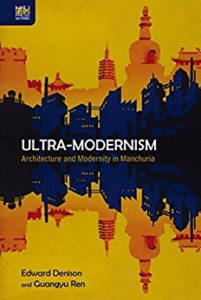Posted: December 19th, 2017 | No Comments »
I’ve been spotting opium references in popular culture with interest for a few years now (2016, 2015, 2014, 2013 & 2012) – just how opium keeps fascinating us…dope refs were still around in 2017, though I spotted a few less (maybe reflecting my reading/watching habits?), but still…
Chris Cleave in Everyone Brave is Forgiven has wartime morphine addiction and withdrawal while Abir Mukherjee in his great A Rising Man, set in Calcutta in 1919, had his hero, colonial police inspector SamWyndham, hitting the pipe in the city’s Chinatown after getting a taste for morphine in the trenches of France. Wyndham makes it to a second case in A Necessary Evil where his opium addiction gets, if anything, worse…


And of course we knew opium, or at least laudanum, would crop up finally in the excellent Taboo with Mr Hardy (James Delaney) taking a nice big swig….and, to be fair, he needed it after having his head split open by an assassin, slapped and scratched by his sister, beat up a few times and tortured by a variety of horrible practitioners (including the sinister Dr Ling!)…series 2 is apparently on the way. Meanwhile Gerard Depardieu was snorting the white powder in Netflix’s Marseille, as the city’s mayor no less – an addiction he picked up after getting on the morphine as a young man. Of course those ever sniffing Peaky Blinders were back on the “snow” in series 4.

Sadly so far there’s been no opium strictly speaking in The Crown – while Princess Margaret and Tony Snowdon might like a joint and we’ve seen Jackie Kennedy whacked out on Dr Feelgood’s injections, we’ve had little worse from Her Maj than that old Buck House favourite – Dubonnet.
Any other contemporary references in film, TV, books do let me know…

Posted: December 17th, 2017 | No Comments »
I constantly recommend books from HKUP on this blog and have written a few for them myself….so a new enhanced website is useful….
The new site features more information about HKUP’s books than ever before and makes it much simpler to discover gems on their list that you may have missed. They have ensured that the shopping cart represents state-of-the-art security, so you can make purchases online with confidence. The site contains a lot of information about the Press—for readers, prospective and current authors, instructors, book reviewers, . . . in short, for everyone!
the new website is here…

Posted: December 15th, 2017 | No Comments »
An excellent book from Katherina Zellweger on DPRK poster art….
This catalogue is published to coincide with the UMAG exhibition North Korea’s Public Face: 20th-century Propaganda Posters from the Zellweger Collection.

For most people outside of the Democratic People’s Republic of Korea (DPRK), it may come as a revelation that art is available in North Korea, or that it is a well-developed feature of national culture. As the state guides artistic production, all artists are members of the Korean Artists Federation, and must create a certain number of works each month to receive a salary.
Although the category of ‘Propaganda Artist’ is a lower-ranking designation than ‘People’s Artist’, the propaganda artists are given the vital task of keeping the population informed. Posters first came to prominence during the 1950–53 Korean War and they are still displayed prominently throughout the capital and countryside. Slogans are often taken from statements made by the country’s leadership and from newspaper editorials.
North Korean posters portray a wide variety of topics: from phrases reinforcing party policies to messages reiterating campaigns on culture, public health, education and sports. Works presented in this exhibition primarily illustrate topics related to agricultural development and food production—areas of particular interest based on the years that Katharina Zellweger has addressed food and food security-related issues.
Katharina Zellweger is a Research Fellow at Stanford University. She first visited North Korea in 1995, as the country was devastated by floods that contributed to a massive famine. As an employee of Caritas, the global Catholic organisation, she was among the first international aid workers on the ground. In the following years, she has made more than fifty trips and visited almost all of the country’s provinces, including the hardest-hit areas usually off-limits to foreigners. In 2006, she was offered a position as country director for the Swiss Agency for Development and Cooperation in Pyongyang. For the next five years, she lived in the North Korean capital and oversaw a series of projects. Her five-year tenure in Pyongyang coincided with a period in which North Korea gradually began to experiment with elements of economic reform, including private plots for farmers to grow and sell crops on the open market and the introduction of an incentive system to boost production.
the exhibition is still running at UMAG at HKU….

Posted: December 15th, 2017 | 2 Comments »
Prof. Richard de Grijs on 17th Century Exploration

How do we know where we are, or what time it is? In this era of smartphones and GPS, it’s hard to imagine how 17th century intellectuals answered such basic questions. Even how they communicated with one another – largely through letters – was different in the days before scientific journals. Prof. Richard de Grijs’ new book combines excerpts from many of these letters for the first time in a single volume, exploring how the uptick in world trade in the 17th and 18th centuries gave determinations of location and time strategic importance. In discussing his book “Time and Time Again: Determination of Longitude at Sea in the 17th Centuryâ€, de Grijs will lead us on a journey through time, back to when Europeans scrambled to measure positions at sea, following in the wake of Chinese admiral Zheng He’s voyages across the Indian Ocean.
WHAT: Prof. Richard de Grijs on 17th century exploration
WHEN: Dec. 19, Tuesday, 7:30-9:00 PM
WHERE: The Courtyard Institute, , 28 Zhonglao Hutong, Dongcheng District, Beijing (see map)
HOW MUCH: RMB 30 for RASBJ members, RMB 50 for non-members
RSVP: email communications.ras.bj@gmail.com by Dec. 18 and write “de Grijs†in the header
Posted: December 14th, 2017 | No Comments »
This stuff pisses me off too much to write about sometimes, but here’s some links…
Tina Kanagaratnam and Katya Knyazeva on the bulldozing of Shanghai’s Laoximen district in SupChina….
Andrew Field on the closure of the Astor House Hotel in Shanghai on his blog…
Me on RTHK’s Morning Brew on both these horrible events….
Posted: December 13th, 2017 | No Comments »
Well deserved…a great book….
Dr Edward Denison and Guang Yu Ren for Ultra Modernism in Manchuria
 The Asia Express, the South Manchuria Railway’s ‘ultra-modern’ high-speed train at Dalian’s ‘ultra-modern’ railway station with ‘ultra-modern Manchurian girls’.
The Asia Express, the South Manchuria Railway’s ‘ultra-modern’ high-speed train at Dalian’s ‘ultra-modern’ railway station with ‘ultra-modern Manchurian girls’.
The awards celebrate the best research in the fields of architecture and the built environment.
The 2017 RIBA President’s Medal for Research was presented to Dr Edward Denison Bartlett School of Architecture, UCL and Guang Yu Ren, Independent Researcher, UK for their project: Ultra Modernism in Manchuria.
The paper explores ‘Ultra-Modernism’, an ideological term employed to describe Japan’s encounter with modernity and its distinction from western precedents/constructed cannons, deemed historically and intellectually impartial.
‘Ultra-Modernism’ refers to the speed and intensity of the development of the north-eastern region of China formerly known as Manchuria before the Second World War, when Japan’s attempts to build an empire throughout the 1930s prompted the construction of more than one hundred towns and cities in a new state they named Manchukuo.

about the book:
History is a record of power. The twentieth century – modernism’s century – was dominated by ‘the west’ and its ‘official’ history is a testament to this dominance of ‘others’.
Modernist history is a canon constructed by, for and of the west, with major consequences for architectural encounters with modernity outside the west, which are routinely overlooked or possess an assumed inferiority; a postulation asserted through inauthenticity, belatedness, diluteness and remoteness, geographically, intellectually, and even racially. Few sites demonstrate this historical and intellectual impartiality more explicitly than the north-eastern region of China formerly known as Manchuria before the Second World War, when Japan’s attempts to build an empire throughout the 1930s prompted the construction of over one hundred towns and cities in a new state they named Manchukuo.
Such was the speed and intensity of Manchukuo’s encounter with modernity and its distinction from western precedents, the Japanese branded it ultra-modernism. Ultra-Modernism in Manchukuo was ideologically ubiquitous and became manifest in urban planning, architecture, transportation, photography and film – all essential facets of modern metropolitan life in Manchukuo.
Among the many new cities developed by the Japanese, the jewel in their imperial crown was the vast new capital of Hsinking (‘New Capital’), the city’s nomenclature echoing the ultra-modernity on which empire was built. Despite the scale, scope and consequences of Manchukuo’s encounter with modernity, its experiences have yet to make a significant contribution to architectural knowledge globally.
After more than a decade of research culminating in the recent publication of the first book to focus exclusively on architecture and modernity in Manchuria, this work not only fills a conspicuous gap in existing architectural knowledge and challenges the modernist canon, but also provides important context to the rising tensions in the region, the seeds of which were sown in Manchuria.
Posted: December 11th, 2017 | No Comments »
Please join our tour of Fayuan Temple, the oldest Buddhist Monastery in Beijing, led by cultural heritage protection expert Matthew Hu Xinyu.
First built in the Tang Dynasty (645 AD), during the reign of Emperor Taizong, the temple was rebuilt a number of times over the centuries. Many of its historical relics survived through the ages, even though the temple was severely damaged during the 1966-1976 Cultural Revolution. The Fayuan temple is also known as the backdrop for an historical novel, titled “Martyrs’ Shrine: the Story of the Reform Movement of 1898 in China†and written by prominent author Li Ao, who was born in Beijing and brought up in Taiwan; it was a Nobel Prize for Literature nominee in 2001. A national-level listed heritage building, the temple currently hosts the China Buddhist College and the China Buddhist Sutra Library.

Date:Â Â Friday, Dec 15, 2017
Time:  2 pm – 4:30 pm
Where: Fayuan Temple, #7 Fayuansi Qianjie (south of Jiaozi Hutong), Xicheng District tel: 6353 4171 (15 mins walk from Caishikou subway stop, exit D) 西城区法æºå¯ºå‰è¡—七å·æ³•æºå¯º
How much: RMB 50 for RASBJ members, RMB 80 for non-members (prices include the entry fee)
RSVP: email communications.ras.bj@gmail.com no later than Dec. 14, and write“Fayuan Temple†in the header.

Posted: December 9th, 2017 | No Comments »
Camphor Press has published Aso Tetsuo’s war diary, From Shanghai to Shanghai….

“My war records are of military comfort women…â€, writes Dr. Aso, “…cabaret dance girls, the military secret service, missionaries, and . . . the incidentâ€. The “incidentâ€, as it is often referred to in books about Japanese comfort women, alludes to the fact that Dr. Aso (1910–1989) was the first Japanese medical officer officially ordered to perform health examinations on military comfort women. This policy was instituted in 1937 for a new contingent of comfort women freshly sent to Shanghai to serve the Japanese military. It was the initial measure undertaken by the Japanese High Command to reduce venereal disease among the troops. Dr. Aso performed this duty throughout the term of his assignment in China.
From Shanghai to Shanghai (Shanhai yori Shanhai e) is the most unusual, grass-roots diary of Dr. Aso, a 27 year-old gynecologist who takes us with him to work and on his travels throughout China during his various tours of duty in the Sino-Japanese war. The journey begins in late 1937, when he first arrived in Shanghai, and continues for four years, until 1941, when he returned to Japan from Shanghai after tours of duty in Shanghai, in Nanjing, and in a number of other parts of central China.
Dr. Aso Tetsuo was quite literally born into a world of gynecology and prostitution. His father was a gynecologist with a private medical and teaching practice in the “entertainment quarters†— red light district — of Fukuoka. Besides being a school for midwives, Aso’s childhood home was a medical clinic for the prostitutes employed in the neighboring teahouses and brothels. As a child, Aso knew the women who were his father’s patients as his “big sistersâ€. It was only natural, Aso later reflected, that when he grew up he would become a gynecologist and specialize in the health of working women. After the end of the war in 1945, Aso was frequently accused by the press of having forced women into prostitution during the war. This prompted him finally to tell his side of the story by compiling this remarkable book from his wartime diary.











